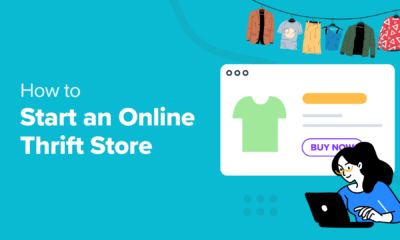Congratulations! You have the approvals and budget for your company’s first digital asset management (DAM) solution and are ready to jump in. Now what? The excitement of the early days of your DAM journey can quickly give way to apprehension when faced with the question: Where do I start?
Where are my assets?
Before you can decide on an appropriate DAM system and the amount of storage you’ll need, you need a complete picture of what you’re working with regarding the number of assets and file sizes. If your company produces a large volume of high-resolution video assets that will be stored in the DAM, that can take up a significant amount of storage space. It’s never too soon to start unearthing and gathering your company’s assets.
To get the most value out of your DAM, it needs to be the single source of truth for all of your assets. Leave no stone unturned. Account for all file types, including images, videos, documents and source files. Don’t assume that all of your assets are on the company shared drives. Shared drives are an excellent place to start, but make sure you’re also looking at Sharepoint sites, putting out a call for any external storage devices, and finding out if your users have a habit of storing things on their hard drives. Does your company work with agencies? Ensure they’ve supplied you with all the files they’re contractually obligated to provide.
Early indicators
Once you’ve made progress with gathering all your assets, look at what you’ve collected and see if you can start identifying some broad preliminary requirements:
- What range of file types and sizes does your DAM need to accommodate?
- Given the volume, depth, and history of assets you’re seeing, should everything go into the DAM from day one? Or does it make more sense to select a key date and upload every asset created from that day forward into the DAM while maintaining archival assets in another location? Remember that if you maintain archival assets in a separate location, they should be quickly and easily accessible by designated users. You’ll typically find that some legacy assets still approved for current use will fall outside the scope of what you’ve loaded into the DAM for its launch. These assets will need to be uploaded into the DAM as users request them.
- Do you typically generate multiple renditions for single assets? For example, do you have not only the original version but also a thumbnail, small, medium, and large versions?
- Will you need to account for versioning? When you upload a new version of an asset into your DAM, do you need to retain all previous versions for archival purposes and have them associated with the current version? Do the specific changes across versions need to be tracked?
- Are there specific legal or regulatory requirements around some or all of your assets?
Seeing double. Or triple.
Another asset-related task you’ll want to address sooner rather than later is duplicates. With assets scattered across multiple locations, duplicate copies of the same assets are bound to be in multiple locations. They may all have the same file name, allowing them to be easily identified, or they may not. Often it can take the trained eye of your creative team or content experts to identify duplicate assets with differing file names.
The sooner you start identifying and weeding out duplicates while you’re gathering assets, the better. You’re likely already familiar with the “garbage in, garbage out” principle, and you should remember it when prepping assets for upload into your DAM. Sure, you could throw everything in there and clean it up later, but will you? And in the meantime, how much confusion is it causing for your end-users, some of whom are being exposed to a DAM for the first time? You need to find time and resources to address the duplicates sometime, so make it a priority to do it before you’re ready for that bulk upload of assets into your shiny new DAM. You could be saving yourself time in not duplicating work by putting metadata on assets that will likely be deleted shortly after uploading to the DAM.
Who’s driving this DAM train? And who’s along for the ride?
Seriously consider bringing in a DAM librarian. The sooner, the better. You may be hesitant about spending part of your DAM budget on a full-time librarian, and yes, I may be a bit biased about this point, but it will be worth every penny. Having a librarian dedicated to the project from the beginning is especially crucial if this is your company’s first DAM. And to get the most out of your investment, find someone with the trifecta of DAM experience: selecting, setting up, AND maintaining a DAM. Bring them in as soon as possible. It will save you time and money in the long run because they can save you from making decisions early on that you’ll have to devote resources to fixing later.
As a librarian who has helped three companies launch DAMs, I know very well what not to do, and I can guide you away from making decisions you’ll regret later. Waiting to bring someone in until you realize you’re in over your head and have made some not-so-optimal decisions means your librarian could potentially spend months, if not years after they’ve arrived in “fix-it” mode while doing damage control and trying to convince users they can trust the system that did not make the best first impression.
If your DAM Librarian is the driver of your train, your stakeholders are your first-class, VIP passengers. Identifying them and getting their commitment to the project should happen as early as possible. This allows time for them to get any necessary approvals from their leaders and prep their schedules for the time commitment. When identifying stakeholders, make sure you include people from each separate division of your company that will engage directly with the DAM. Any group or department that will include regular end users of the DAM should be represented. And don’t forget that the IT and Legal departments need to be included.
Get the daily newsletter digital marketers rely on.
While you want to ensure you have a voice from each relevant area of the company, be careful about establishing too large of a stakeholder group, which could make discussions unwieldy and lead to issues coming to a consensus. Part of the stakeholder’s role is to represent their respective division and be a single voice for them in meetings, so only one stakeholder per area is required. Clearly define for your stakeholders the parameters of the role and your expectations. Be sure that they know the time commitment that will be involved, and get their commitment that they’re willing and able to remain fully engaged for the duration of the work. The participation of your stakeholders can significantly help or hurt the progress and timeline of your project, so set clear expectations right from the start.
While your DAM journey will ultimately be rewarding, there will be ups and downs along the way. Taking these few specific first steps will start your journey off on the right track and set you up for future success.
Opinions expressed in this article are those of the guest author and not necessarily MarTech. Staff authors are listed here.

































You must be logged in to post a comment Login